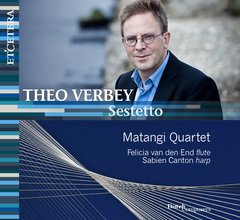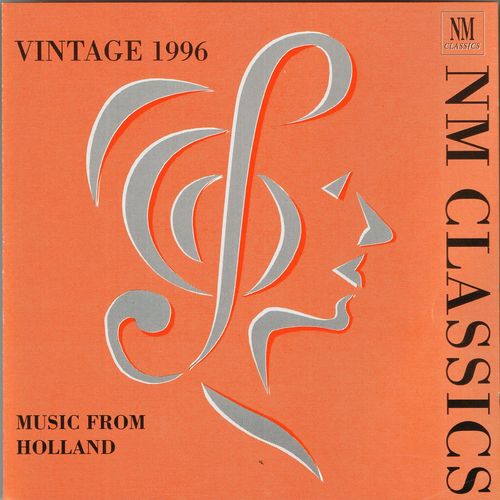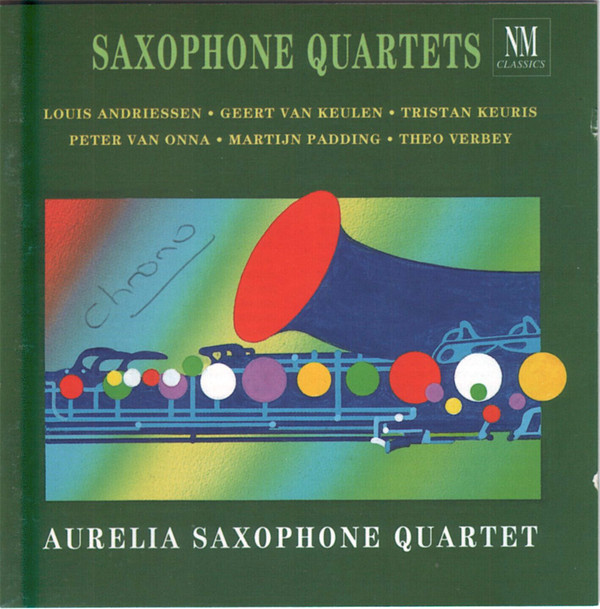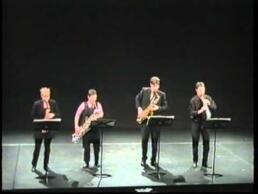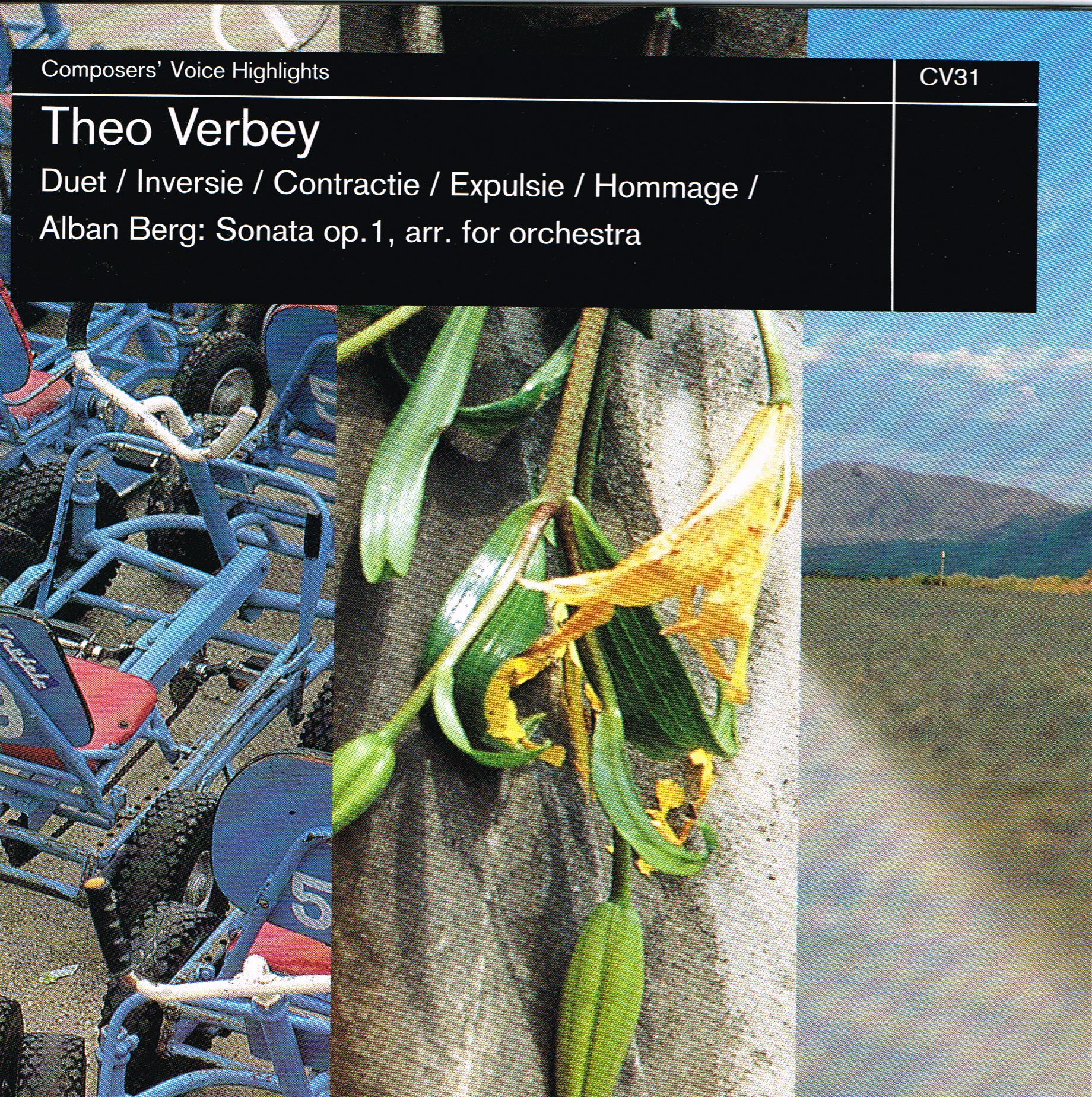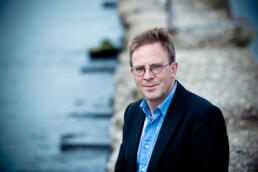Guillaume de Machaut, Ballade no. 37, 'Dame, se vous m'estes'
Guillaume de Machaut, Ballade no. 37, 'Dame, se vous m'estes'
2015
Details
Duration:
2:25
Instrumentation:
portative organ, trombone
Based on texts by:
Guillaume de Machaut
arranged for Andrea Vasi and Sebastiaan Kemner
Theo Verbey arranged this renaissance song for Andrea Vasi and Sebastiaan Kemner’s Ballade program in Dutch Classical Talent.
In Theo's Own Words
Based on the song:
Dame, se vous m’estes lointeinne,
Pas n’est mes cuers de vous lointeins,
Car par ramembrance procheinne
Est nuit et jour de vous procheins;
Et en lieu dou cuer est remeins
En mon corps li maus amourous,
Comment que soie long de vous.
Mais cils mauls est sans nulle peinne;
Car, quant j’en suis plus fort ateins,
Bonté, valour, biauté souvreinne,
Dont vos gentils corps est enciens,
Font que je chant de joie pleins
Pour vous, dame, à qui je sui tous,
Comment que soie long de vous.
Se vous pri, dame d’onneur pleine,
Que, se vos frans cuers est ja certeins
Que li miens loyaument se peinne
D’amer et qui vous est remeins
Que vous souffrez à tout le meins
Qu’il vous serve, loiaus cuers dous,
Comment que soie long de vous.
Video
Guillaume de Machaut, Ballade no. 37, arranged for portative organ and Trombone
Guillaume de Machaut, Ballade no. 37, 'Dame, se vous m'estes'
Sebastiaan Kemner and Andrea Vasi's Dutch Classical Talent Finale, beginning with Theo Verbey's arrangement for them (until 2:25) of Guillaume de Machaut's Ballade no. 37, 'Dame, se vous m'estes' for portative organ and trombone.
Sonatine for bassoon and double bass
Details
Instrumentation:
Bassoon and Double Bass
Written for:
Nel de Vries, on the occasion of her wedding to Diemer de Vries
Bandersnatch
Details
Duration:
12'
Instrumentation:
vc. pianola
Commissioned by:
The Cello Biennale Amsterdam
Premiered by:
Larissa Groeneveld
In Theo's Own Words
“I wrote Bandersnatch for cello and pianola (player piano) in 2010 at the behest of the Cello Biennale Amsterdam. The title is derived from the poem ‘Jabberwocky’ (1872) by Lewis Carroll. Here are the first two stanzas:
’Twas brillig, and the slithy toves
Did gyre and gimble in the wabe;
All mimsy were the borogoves,
And the mome raths outgrabe.“Beware the Jabberwock, my son!
The jaws that bite, the claws that catch!
Beware the Jubjub bird, and shun
The frumious Bandersnatch!”The use of cello and pianola deserves some explanation. In the fall of 2007 I was working on the completion of Les Noces (1919) by Igor Stravinsky (1882-1971), using the original instrumentation of the accompanying ensemble, consisting of 2 cimbaloms, harmonium, percussion and pianola. The first performances of that version too place in the summer of 2009 during the Amsterdam Grachtenfestival, with Capella Amsterdam and an ad hoc ensemble led by Peppie Wiersma.
The pianola added its own dimension to the way the ensemble played. Because it was completely inflexible with regard to tempi, it turned out to be quite useful as the ‘motor’ of the music-making. That was something that called for a follow-up.
The piece (Bandersnatch) is characterized by separate roles for the cello and pianola. The cello’s share is ‘lyrical’ in tone. Opposite that is the mechanical motion of the pianola part. The basic structure is formed by three different harmonic patterns, used in a globally mirrored musical palindrome form (ABCBA).”
– Theo Verbey
In Concert
Nothing found.
Sospeso
Details
Duration:
6'
Instrumentation:
8perc: Marimba, glockenspiel, crotales, 2 vibraphone, tubular bells/bell plates, thai gong
Sestetto
Details
Duration:
18'
Instrumentation:
For flute, harp and string quartet: fl, hp, 2vn, va, vc
Written in honor of:
Stichting Kamermuziek Almelo
Find on CD:
In Theo's Own Words
“Sestetto was written in 1998 to celebrate of the 15th anniversary of the Almelo Chamber Music Foundation. The 6 instruments of the piece (to which the title refers) are flute, harp, 2 violins, viola and violoncello. Part 1. Andante, is characterized by slow, continuous movement in the harp, which is continually placed in a different light by the string quartet. The flute, which is treated like a soloist throughout the work, always brings variations to the same musical phrase. Part 2. Tempo di tango, is based on the principle of classical sonata form and also refers to the Argentinean tango. Part 3. Adagio, has the characteristics of a passacagliaone, one of the freest forms in the Baroque, in which a continuous bass line in the harp forms the foundation. Part 4. Allegro, is a repetitive fast movement with a strinkingly North American character.”
– Theo Verbey
Reviews
Nothing found.
Passamezzo
Details
Duration:
8'
Instrumentation:
4sax SATB
‘Theo Verbey‘s Passamezzo is the most contemplative selection of this disc. It is based on the melodic material of a four-tone theme used by Verbey to allude to early Baroque forms such as the Passacaglia and the Chaconne. The four-tone theme takes rhythmic shape in durations governed by the proportions 5 : 3 : 2 : 6. These numerical ratios in addition determine the proportions between the four movements of this composition – a procedure as old as notated music. Verbey explains: ‘I try to compose a sort of music that is influenced to the point of saturation: not just by fifty years of tradition, but by hundreds of years.’ – by © Huib Ramaer, translated by Ruth Rose. Source: NM Classics CD #92053 liner notes, ‘Saxophone Quartets’ played by the Aurelia Saxophone Quartet.
Find on CD:
In Concert
Nothing found.
